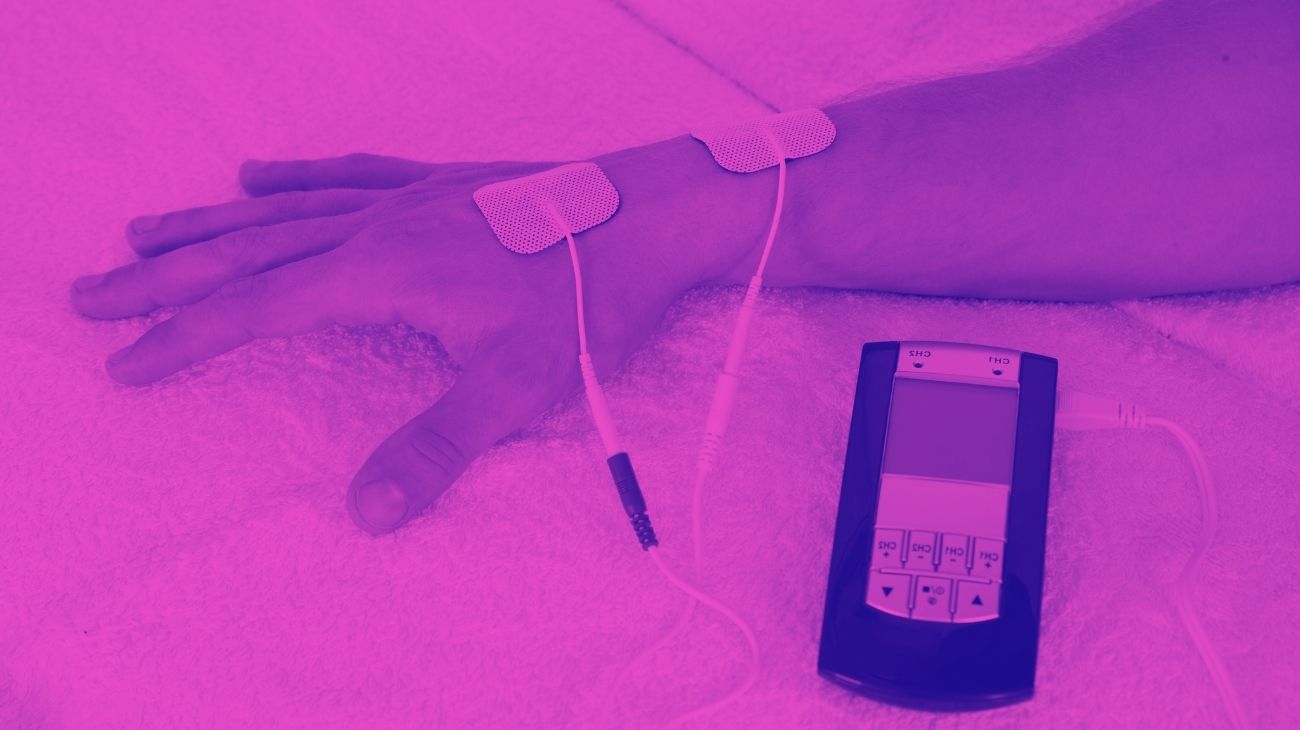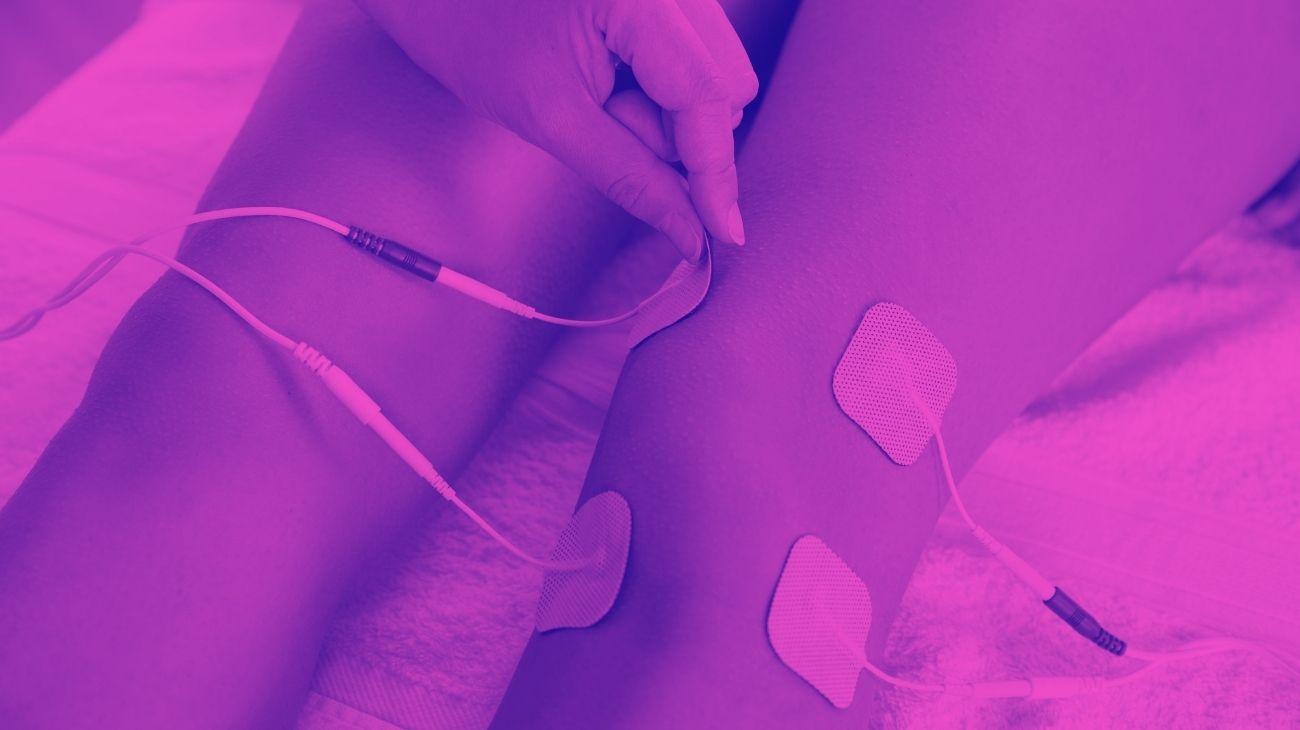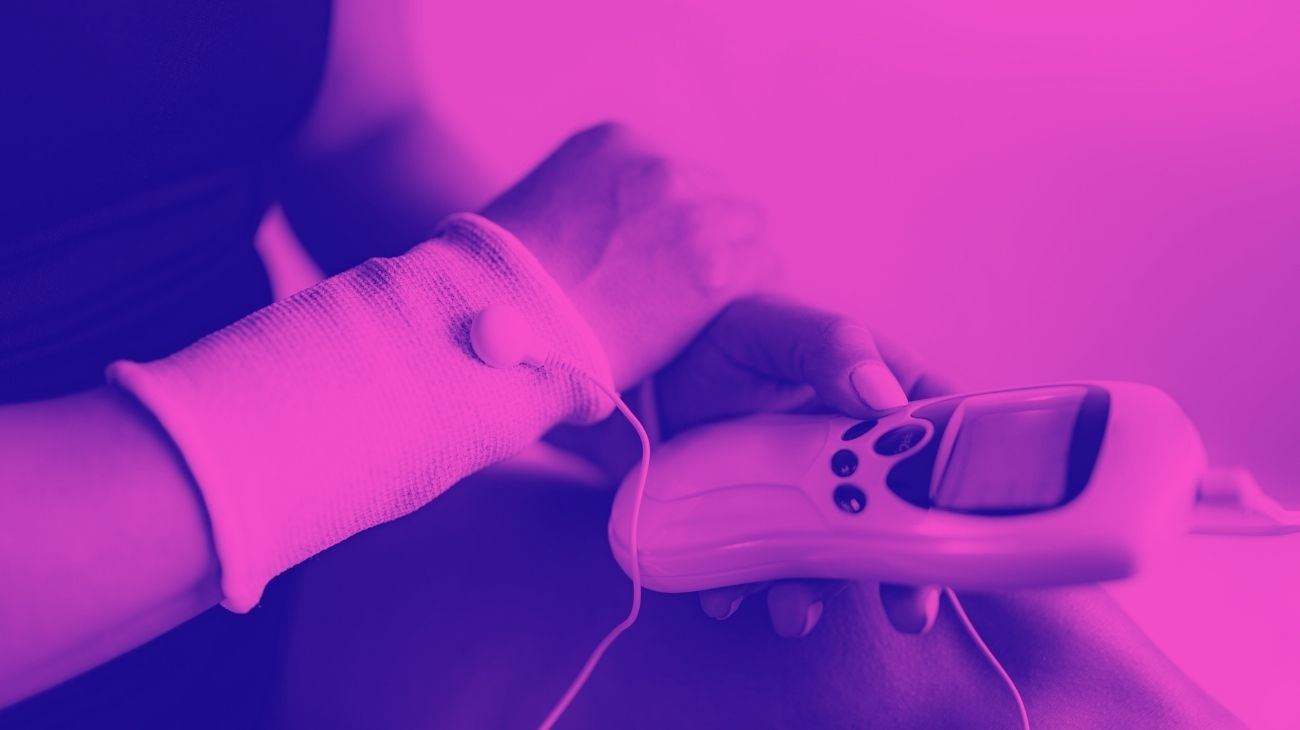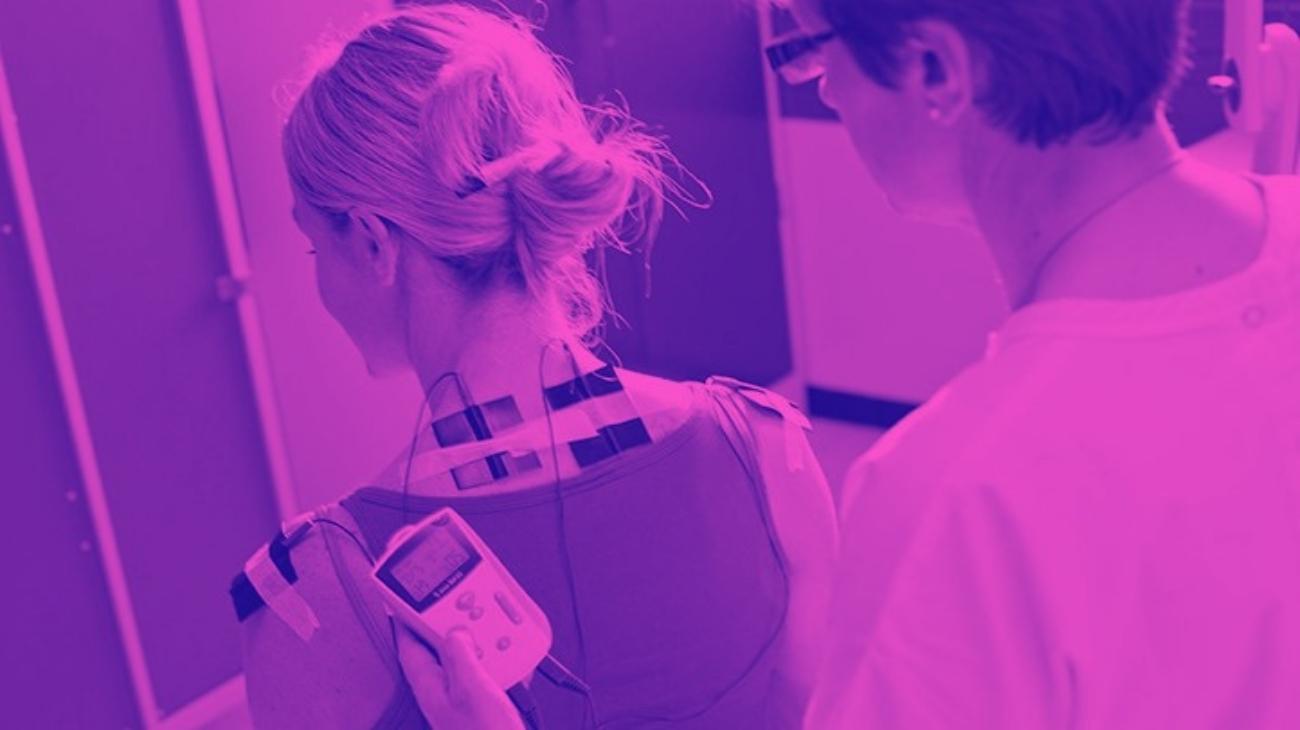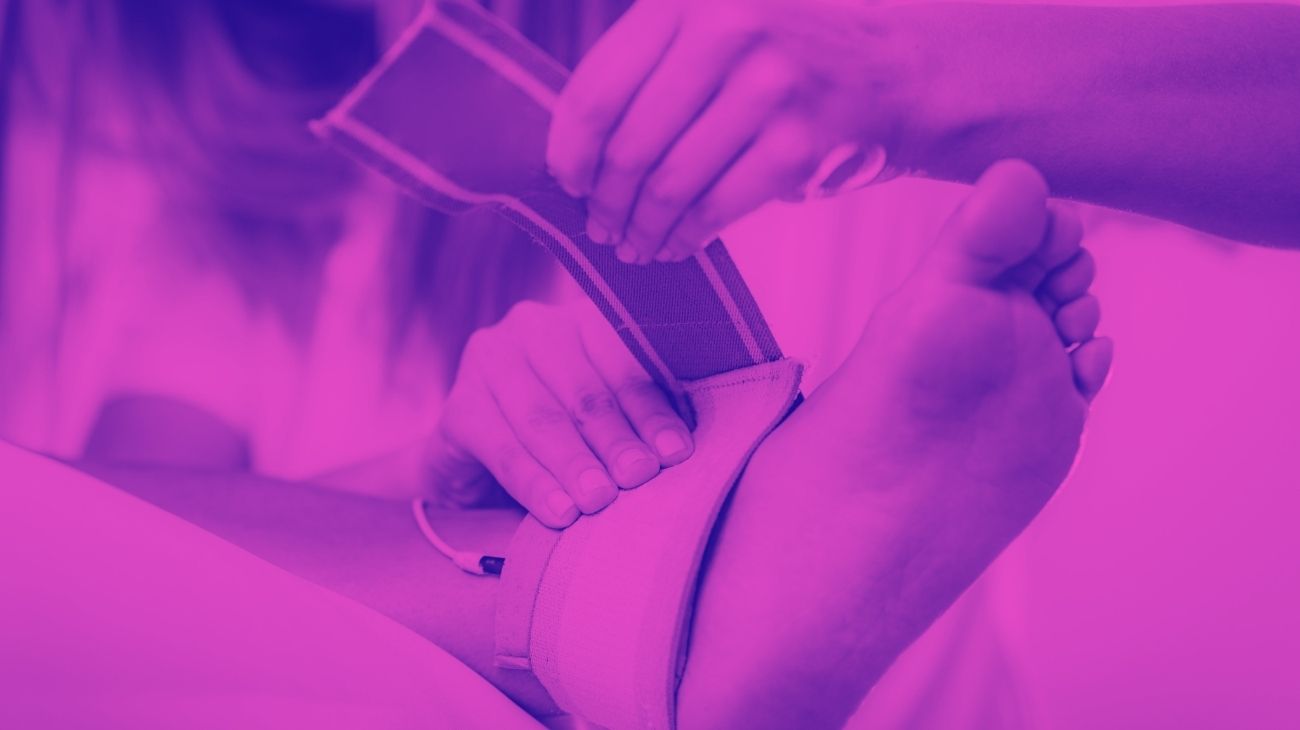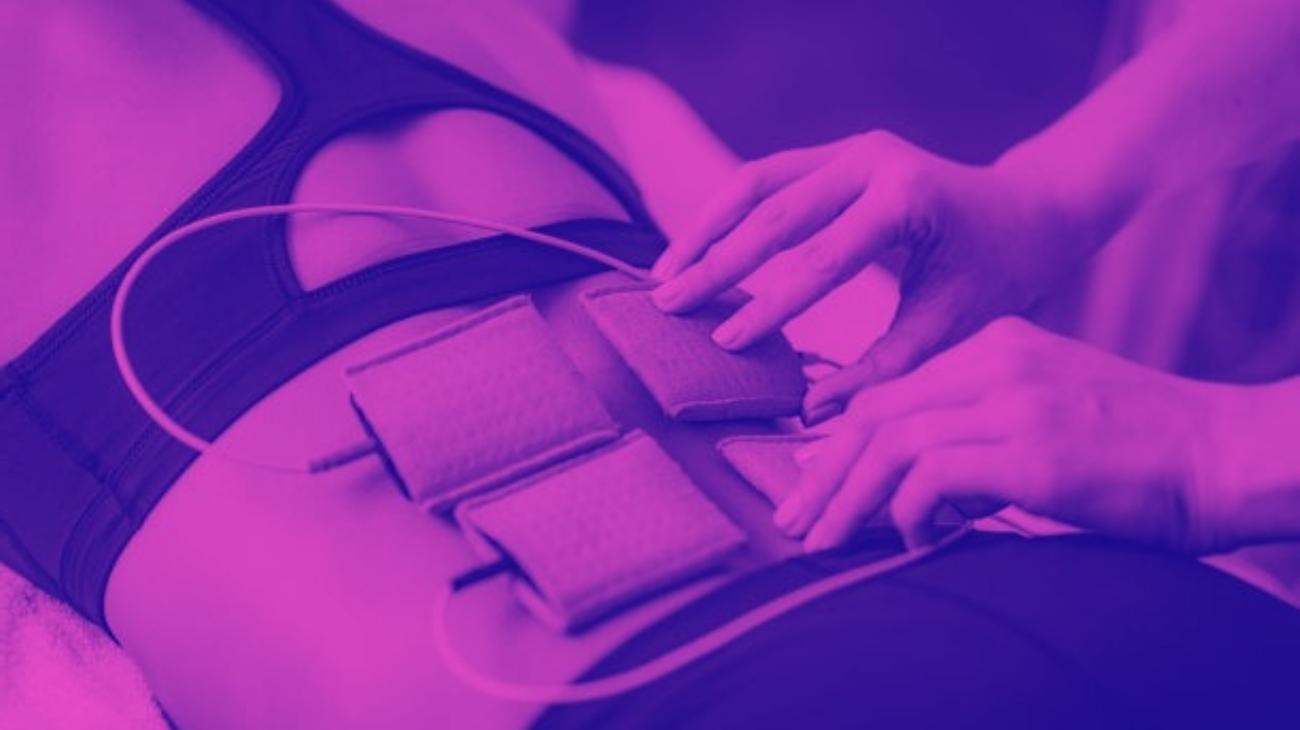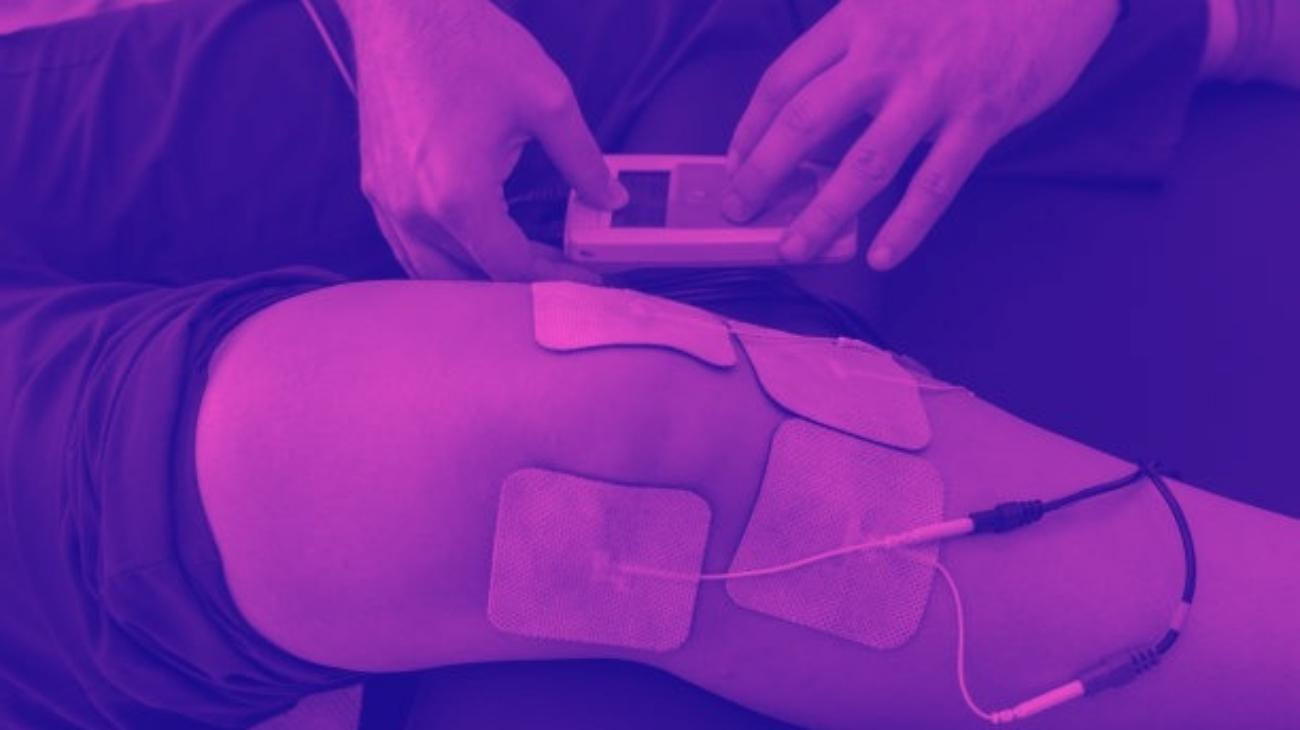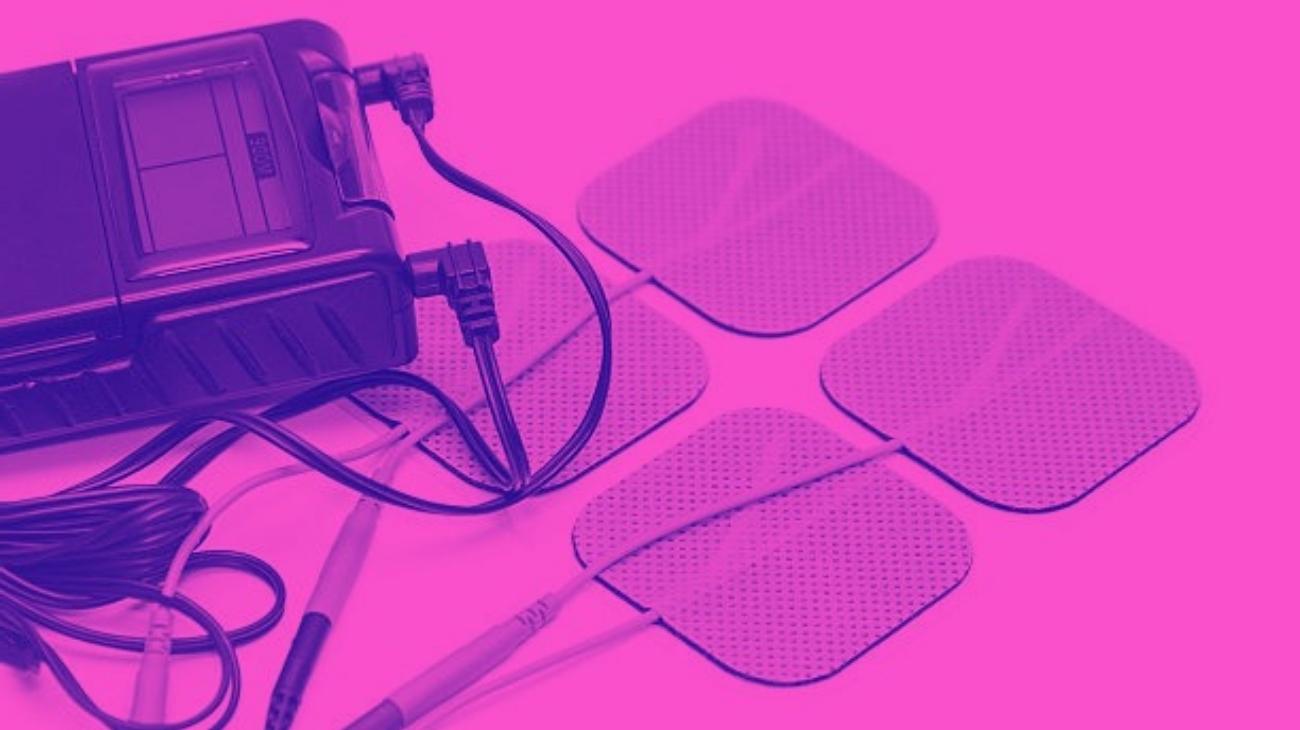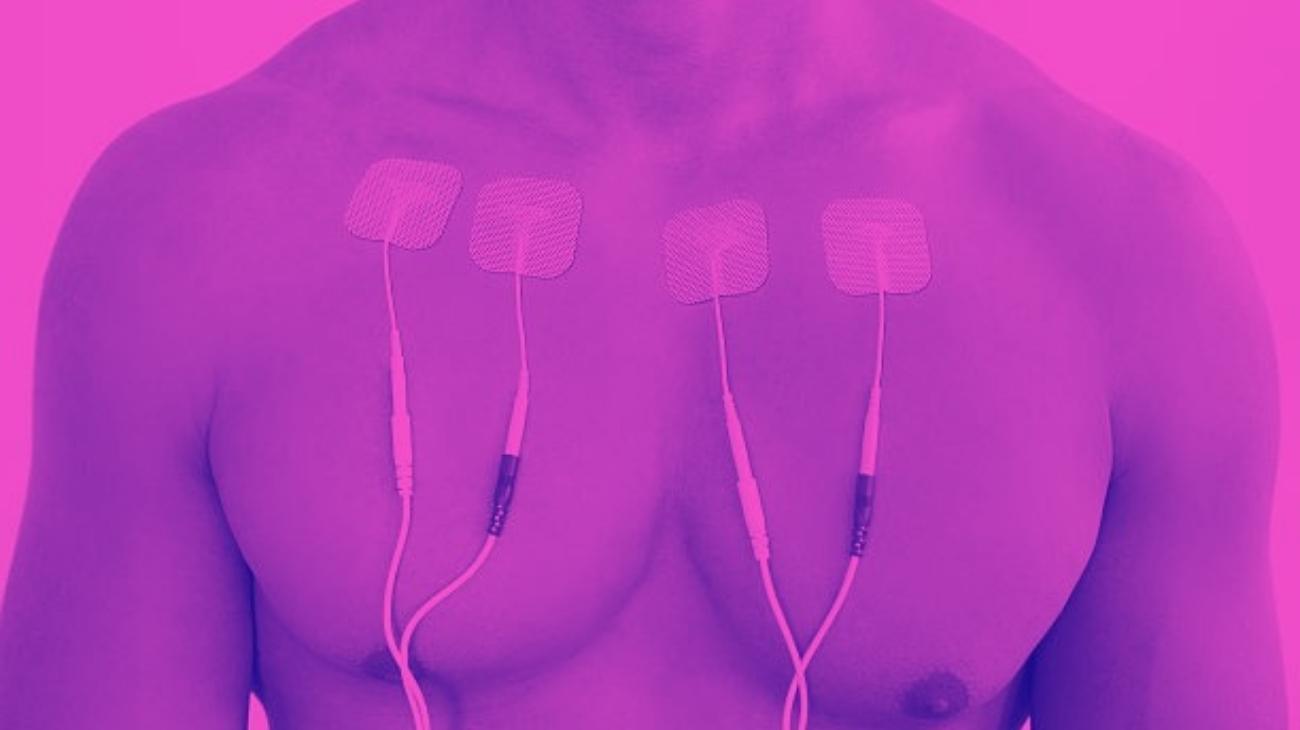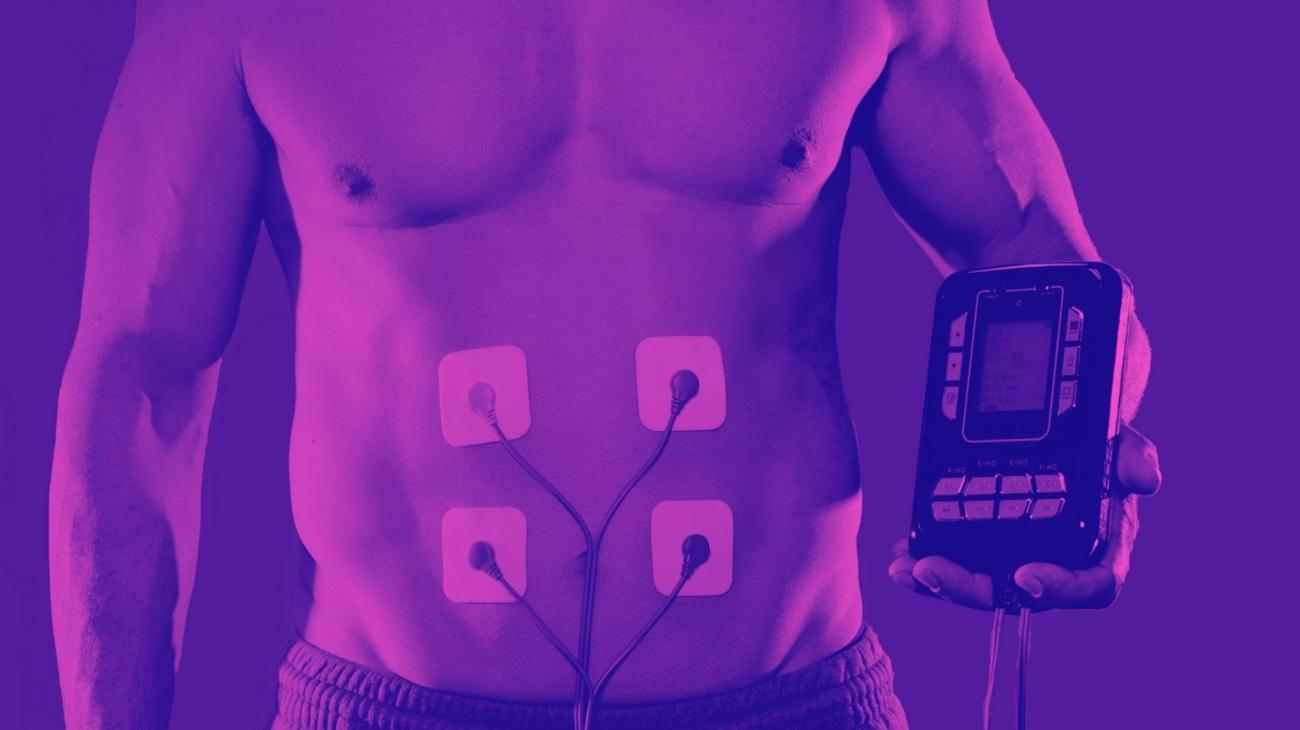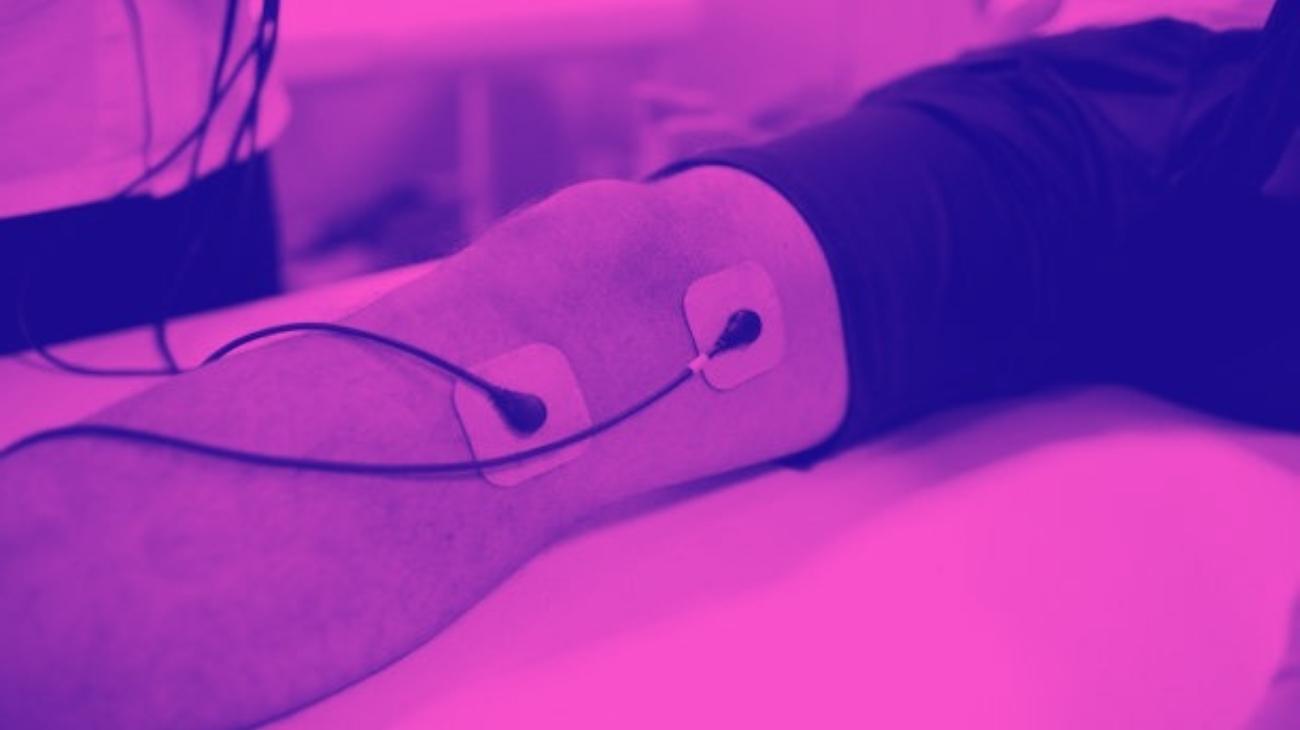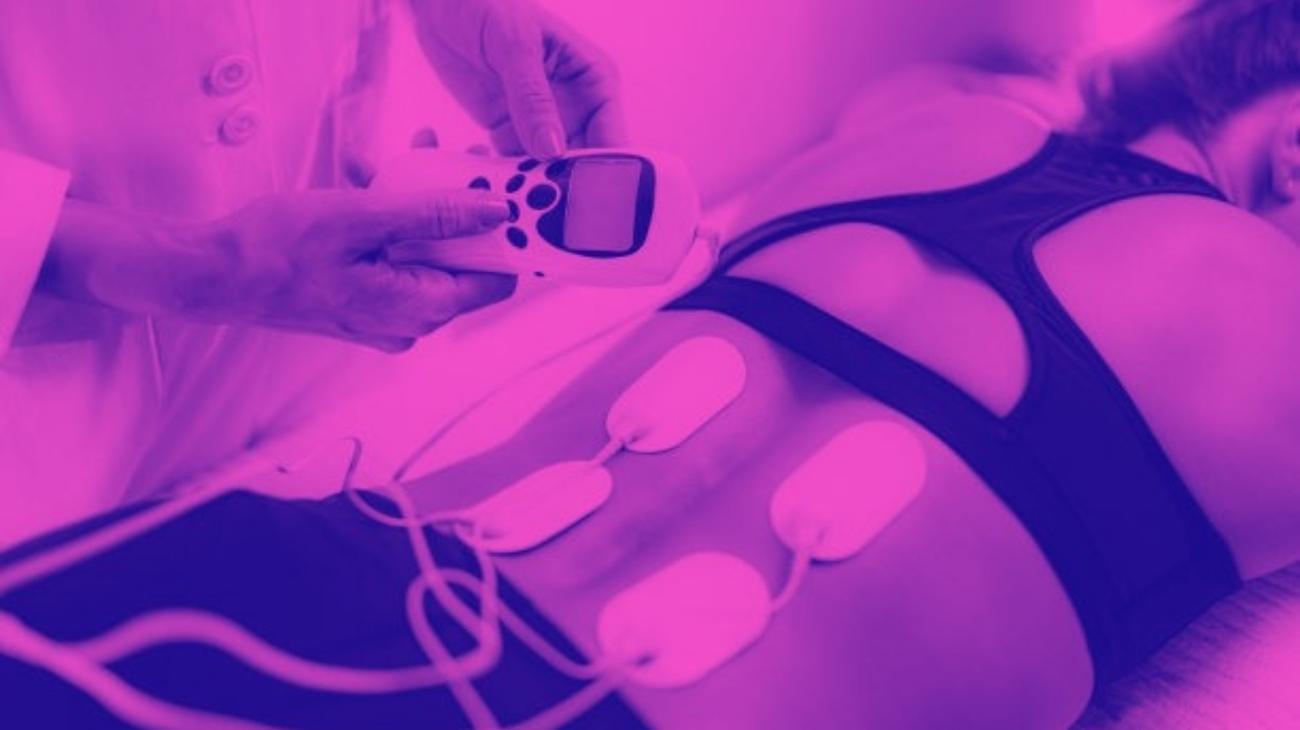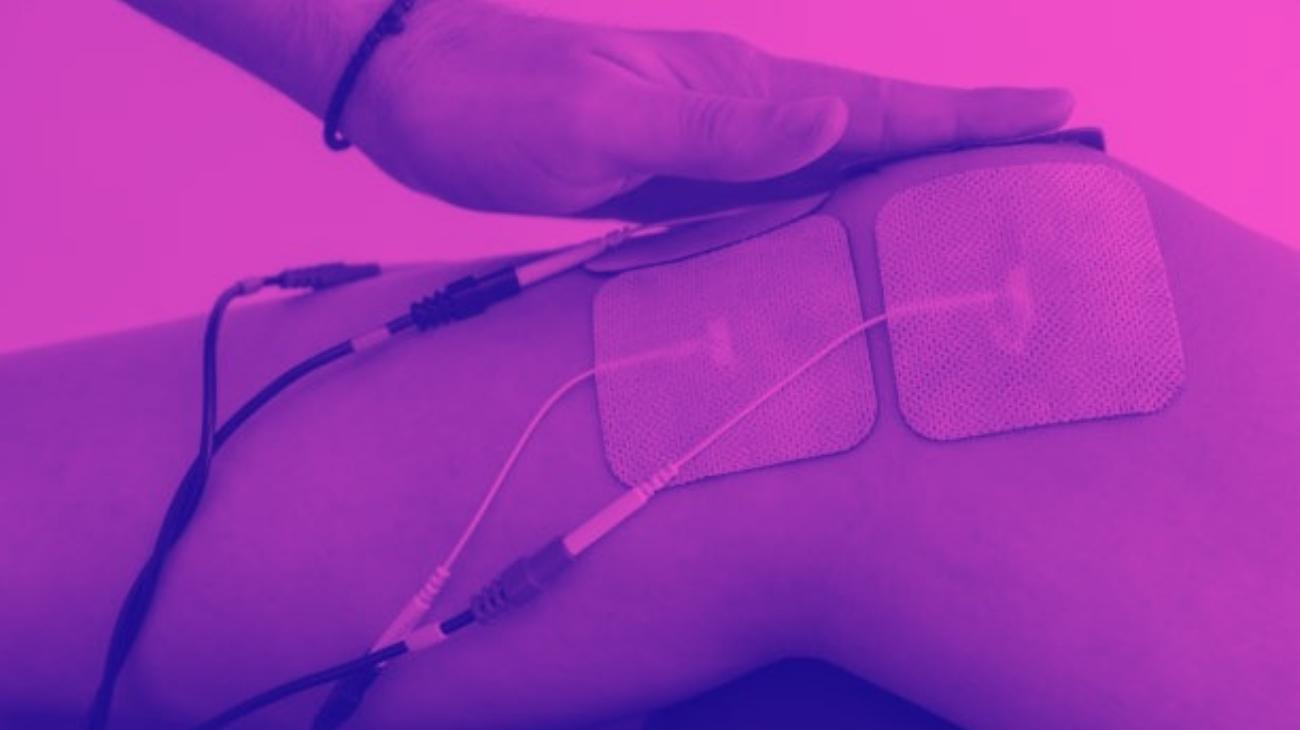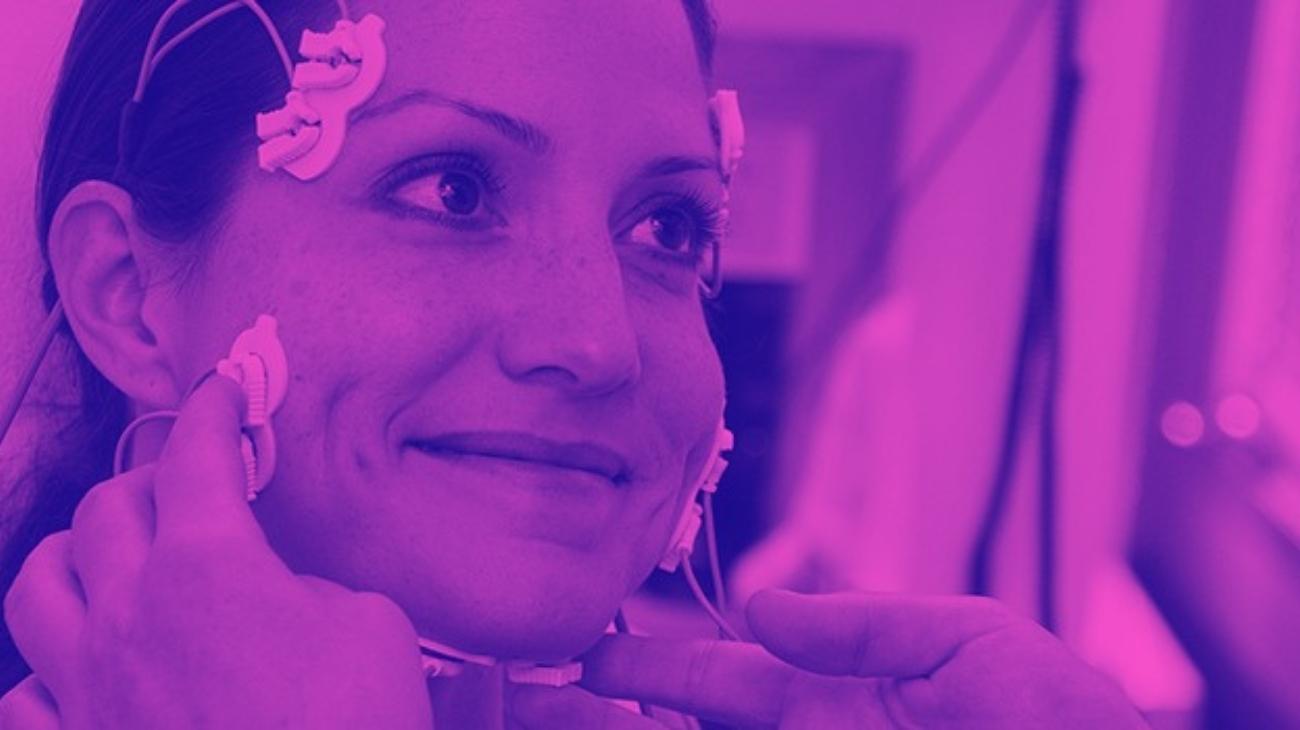- How to use TENS machines to relieve wrist pain?
- Best TENS units to treat carpal tunnel syndrome
- How to use EMS to strengthen muscles and avoid carpal tunnel syndrome?
- Best EMS machines to avoid hand and wrist injuries
- Video: How to place electrodes pads on hands and wrists?
- More types of EMS stimulators and TENS machines you should know about
- What is carpal tunnel syndrome and what are the causes?
- What are the most common types of wrist pain?
- Differences between TENS and EMS: Which is better for treating carpal tunnel?
- Contraindications in the use of electrodes and electrotherapy
The hands are indispensable extremities for the performance of most daily tasks, regardless of their type. For both office workers and top athletes, the hands and wrists are subjected to an almost constant amount of stress, in the form of physical activities of varying intensity performed in usually inadequate positions.
One of the most common effects of this stress is carpal tunnel syndrome, an ailment that can cause painful and debilitating effects on the hand and arm, necessitating the application of therapies to alleviate the ailments. This is where TENS and EMS electrotherapy modalities come in. In the following paragraphs, we will teach you everything you need to know about carpal tunnel syndrome and how you can address the symptoms of this disorder through TENS and EMS therapies.
How to use TENS machines to relieve wrist pain?
The main function of TENS units is to numb the nociceptors on the nerves in the affected area in order to mitigate the sensation of pain in the patient. For cases such as carpal tunnel syndrome, in which the area of application is considerably reduced, it is necessary to take into account several factors in order to apply a TENS session effectively.
Where to place the electrodes?
Due to the small surface area available for electrodes in the hand and wrist areas, it is necessary to position the pads in specific areas to obtain the fullest possible effect.
Therefore, the ideal positions are as follows:
- Palm of the hand, at the junction of the hypothenar eminence and the tenar eminence, where the branching of the median nerve begins.
- Dorsal area of the forearm, above the wrist joint.
Which current to use?
The hand and wrist are among the most sensitive areas of the body, with a fairly abundant innervation, so electrical impulses should be applied at low frequencies so as not to negatively stimulate the nerves.
For carpal tunnel syndrome, the ideal frequency is between 30 and 50 Hz, high enough to promote relaxation of the fibrous tissue of the wrist and endorphin production, without overstimulating the nerves.
Best TENS units to treat carpal tunnel syndrome
The effectiveness of Transcutaneous Electrical Nerve Stimulation therapy is proven for the treatment of carpal tunnel syndrome symptoms, so we can find a large number of devices that we can use to apply this therapy. Among the most effective, we can highlight the following:
How to use EMS to strengthen muscles and avoid carpal tunnel syndrome?
The use of EMS devices is contraindicated for most ailments focused on the hand and wrist. However, it is possible to take advantage of its effects for the prevention of most of these.
Where to place the electrodes?
Mobility of the forearm is made possible by a large number of muscles of various sizes and functions, but wrist mobility is attributed to three muscles in particular, on which the electrodes should be positioned. These are:
- Muscular belly of the brachioradialis muscle.
- Palmaris major muscle, on the dorsal portion of the hand.
- Deep flexor muscle of the fingers, positioning the electrode on the anterior aspect of the forearm.
What intensity to use?
Training the muscle tissue of the forearm is a very important factor in the prevention of carpal tunnel syndrome, because it helps to reduce the stress applied to the wrist, thus minimizing the likelihood of excessive pressure on the median nerve.
To obtain optimal results from this training, the ideal intensity varies between 65 and 85 Hz, which are sufficient to generate contractions that contribute to the strengthening of the brachioradialis and palmaris major muscles, improving grip strength and reducing the likelihood of developing wrist pain.
Best EMS machines to avoid hand and wrist injuries
Ailments caused by carpal tunnel syndrome can be largely avoided through strengthening the muscles, applying as little tension as possible on the wrist in order to prevent inflammation. To do this, you can make use of the following EMS devices:
- Type: TENS
- Channels: 1
- Modes/Programs: Not specified
- Intensity: Not specified
- Wireless: Yes
- Heat Therapy: No
- Battery: Not specified
- Electrodes: 1 Pad
- Display: No display
- Size: 6.22" x 1.42" x 3.27"
- Improves joint mobility
- Improves blood circulation
- Accelerates recovery from sports injuries
- Reduces pain symptoms
- Wireless electrodes
- No intensity levels specified
- Does not specify weight
- Not for muscle hypertrophy
Its efficient use of TENS technology allows it to block pain signals before they reach the brain, making it a safe method of treating ailments. It also has a long-lasting lithium battery and an energy-efficient function, which turns the device off every 20 minutes. One of the best devices on the market in terms of portability, discretion and functionality.
- Type: TENS
- Channels: 2
- Modes/Programs: 6 Programs
- Intensity: Not specified
- Wireless: No
- Heat Therapy: No
- Battery: Rechargeable Lithium (up to 20 hours)
- Electrodes: 8 electrodes
- Display: Digital
- Size: Not specified
- Includes user manual
- Accelerates recovery from sports injuries
- Portable and small size
- Long battery life (up to 20 hours)
- Includes carrying bag
- No intensity levels specified
- No heat therapy
- Does not specify dimensions and weight
It has 6 modes of use that emulate different types of massages to achieve different objectives, along with 10 levels of intensity that provides greater effectiveness. The package includes 1 control, 2 large electrodes, 2 small electrodes, 2 guide cables, 1 user's manual, 1 cable case and 1 treatment guide.
- Type: TENS
- Channels: Dual
- Modes/Programs: 24 Modes
- Intensity: 20 Levels
- Wireless: Yes
- Heat Therapy: No
- Battery: Rechargeable Lithium (up to 20 hours)
- Electrodes: 10 Pads
- Display: Touch
- Size: 5.12" x 2.56" x 0.39" - 0.35 lbs
- Portable and small size
- Includes carrying bag
- Long battery life (up to 20 hours)
- Accelerates recovery from sports injuries
- Reduces pain symptoms
- Not for muscle hypertrophy
- Does not include user manual
- No heat therapy
It has 24 modes of use and 20 intensity levels that can be applied in isolation to each of the device's channels thanks to its dual channel function, allowing different therapies to be applied to separate areas of the body. In addition, it has a session timer mode and automatic shut-off that will allow you to give greater efficiency to your sessions and make better use of the energy of its high-capacity lithium battery.
- Type: TENS
- Channels: Dual
- Modes/Programs: 20 Modes
- Intensity: 20 Levels
- Wireless: Yes
- Heat Therapy: Yes
- Battery: Rechargeable Lithium (up to 10 hours)
- Electrodes: 8 Pads
- Display: Digital
- Size: 4.12" x 2.24" x 0.43" - 1.54 lbs
- Reduces pain symptoms
- Rechargeable battery
- Includes user manual
- Portable and small size
- Includes carrying bag
- Not for muscle hypertrophy
- No heat therapy
- No touch screen included
It has 20 modes of use that apply different types of massages oriented to treat a wide variety of ailments, and with its independent channel control mode you will have the possibility of configuring different programs for each of the channels individually, to apply different types of massages in various areas of the body.
- Type: Combo
- Channels: Dual
- Modes/Programs: 12 Modes
- Intensity: 20 Levels
- Wireless: Yes
- Heat Therapy: No
- Battery: Rechargeable Lithium
- Electrodes: 6 Pads
- Display: Touch
- Size: Not specified
- Includes user manual
- Improves blood circulation
- Accelerates recovery from sports injuries
- Rechargeable battery
- Portable and small size
- No carrying bag included
- No heat therapy
- No battery life specified
Its dual channel function allows you to treat multiple areas of the body simultaneously, and its easy to use mode allows you to set the massage modes without any problems. It has a timer that you can set up to 60 minutes, and an LCD display that allows you to visualize all the procedures very easily.
- Type: Combo
- Channels: Normally 2 (Dual)
- Modes/Programs: 6 Programs
- Intensity: Not specified
- Wireless: Yes
- Heat Therapy: No
- Battery: Rechargeable (7 hours of use)
- Electrodes: 2 Pods and 6 electrodes
- Display: Smartphone
- Size: Not specified
- Reduces pain symptoms
- Portable and small size
- TENS+EMS Combo
- Wireless electrodes
- Rechargeable battery
- Size and weight not specified
- No intensity levels specified
- No heat therapy
It has a rechargeable battery that can provide an autonomy of up to 7 hours per charge, 6 unique training programs focused on different branches of fitness to help you achieve your goals, and compatibility with your mobile for easy use. It is recommended for those physically active people looking for a compact, portable and natural way to deal with workout-related ailments.
Hi-Dow - Dual channel TENS/EMS unit for physical therapy with 8 modes & 20 intensity levels & 4 pads
- Type: Combo
- Channels: Dual
- Modes/Programs: 8 Modes
- Intensity: 20 Levels
- Wireless: Yes
- Heat Therapy: No
- Battery: Rechargeable Lithium
- Electrodes: 4 Pads
- Display: Digital
- Size: 6" x 4" x 5" - 0.63 lbs
- TENS+EMS Combo
- Portable and small size
- Accelerates recovery from sports injuries
- Includes user manual
- Rechargeable battery
- Battery life not specified
- No carrying bag included
- No heat therapy
It has 8 preset programs and 20 intensity levels, along with a session timer function that you can set between 10 and 60 minutes. Its built-in rechargeable lithium battery provides excellent durability, and the package contains 1 XP Micro 8 electrostimulator, 1 set of large pads, 1 set of small pads, 2 cables, 1 power adapter, 1 user manual and 1 carrying case to take it wherever you need it.
- Type: Combo
- Channels: Dual
- Modes/Programs: 24 Modes
- Intensity: 20 Levels
- Wireless: Yes
- Heat Therapy: No
- Battery: Rechargeable Lithium (up to 20 hours)
- Electrodes: 10 Pads
- Display: Digital
- Size: 3.7" x 1.9" x 1.9"
- Includes carrying bag
- Long battery life (up to 20 hours)
- Portable and small size
- TENS+EMS Combo
- Improves blood circulation
- No weight specification
- No heat therapy
- No touch screen included
The Belifu electrotherapy device includes 10 reusable self-adhesive conductive pads and 5 sets of guide wires. The electrodes are coated with an adhesive layer that gives them perfect adhesion to the skin, and with proper care, can withstand a large number of uses before they need to be replaced.
- Type: Combo
- Channels: Dual
- Modes/Programs: 16 Modes
- Intensity: 20 Levels
- Wireless: Yes
- Heat Therapy: No
- Battery: Rechargeable Lithium (up to 30 hours)
- Electrodes: 12 Pads
- Display: Digital
- Size: Not specified
- Good quality
- TENS+EMS Combo
- Accelerates recovery from sports injuries
- Long battery life (up to 30 hours)
- Includes carrying bag
- No heat therapy
- No touch screen included
- Does not specify measurements and weight
What distinguishes this electrostimulator from others on the market is its lightweight design with black and gold finishes, its high quality materials and the inclusion of a dust-proof leather bag with which you can take it wherever you want safely. The compact size in which you can find this device will allow you to take it with you and use it wherever you like very easily, as it is incredibly discreet.
- Type: Combo
- Channels: Dual
- Modes/Programs: 24 Modes
- Intensity: 20 Levels
- Wireless: Yes
- Heat Therapy: No
- Battery: Lithium Rechargeable (up to 20 hours)
- Electrodes: 12 Pads
- Display: Digital
- Size: Not specified
- Prevents muscle atrophy
- Includes carrying bag
- Improves blood circulation
- Rechargeable battery
- Includes user manual
- Some electrodes dry quickly
- No touch screen included
- No heat therapy
It has a powerful rechargeable lithium battery that gives it an incredible autonomy of up to 24 hours of continuous use, thus eliminating any worry that your sessions will be interrupted or that the AA batteries will run out. Additionally, it contains an adjustable timer that allows you to set the duration of your sessions from 10 to 60 minutes and has 20 adjustable intensity levels.
Video: How to place electrodes pads on hands and wrists?
Electrodes for hands & arms
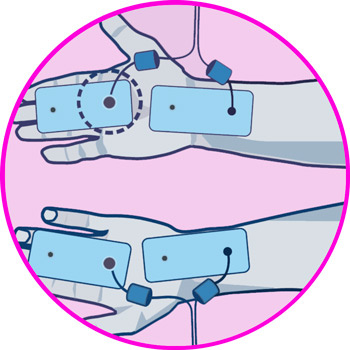
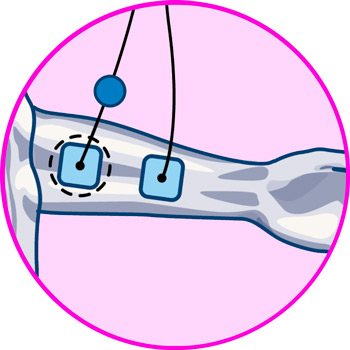

More types of EMS stimulators and TENS machines you should know about
What is carpal tunnel syndrome and what are the causes?
Carpal tunnel syndrome is an ailment caused by excessive pressure on the median nerve. This nerve is a crucial part of both the innervation and motor function of the hand and wrist, and its condition can cause a variety of symptoms among which we can highlight:
- Numbness
- Stiffness
- Tingling
- Weakness
- Muscle damage
This syndrome can occur for a variety of both genetic and environmental causes. Among its main causes we can highlight:
- Repetitive hand and wrist movements
- Constant use of vibrating hand tools
- Alcoholism
- Fractures
- Infections
- Obesity
- Abnormal calcium or protein deposits
What are the most common types of wrist pain?
The wrists are very resistant joints that can withstand quite considerable loads. However, prolonged and excessive strain can lead to a wide variety of wrist ailments and diseases.
The most common are the following:
- Ganglion cysts: are noncancerous nodules that can limit wrist mobility and cause considerable pain.
- Gout: is a form of arthritis caused by uric acid buildup in the joints.
- Fractures: are caused by trauma to any of the bones of the wrist, which break, causing a lot of pain and considerably limiting movement.
- Sprains: is an injury that affects tendons, muscles and ligaments that can cause other disorders.
- Osteoarthritis: one of the most common types of arthritis caused by wear and tear of the bones in the joints.
- Tendonitis: consists of inflammation of the tendons, caused mainly by overuse and performing activities with incorrect technique.
Differences between TENS and EMS: Which is better for treating carpal tunnel?
Electrotherapy is one of the best options for treating pain caused by disorders such as carpal tunnel syndrome. However, it is necessary to make the distinction between the different electrotherapy modalities, as they are not all intended for the same purposes.
In the case of physical therapy, the most commonly used electrotherapy modalities are Transcutaneous Electrical Nerve Stimulation (TENS) and Electrical Muscle Stimulation (EMS).
TENS (Transcutaneous Electrical Nerve Stimulation) is a physiotherapeutic technique focused on the treatment of pain resulting from injury, trauma or disease. It is distinguishable by very specific characteristics, among which we can highlight:
- It interacts directly on the nerve branches of the median nerve, in order to mitigate the sensation of pain caused by pressure on it.
- It uses low frequency and intensity electric currents, which vary between 1 and 250 Hz.
- It is intended as a method to alleviate the symptoms of injuries and painful disorders, it is not a method to cure the origin of these symptoms.
- It is a widespread and versatile technique in the field of physiotherapy.
In contrast, EMS (Electrical Muscle Stimulation) is defined less as a therapy and more as a low-impact fitness method, which is easily distinguished from TENS therapy by the following properties:
- It applies electric shocks of higher intensity than TENS, between 70 and 150 Hz.
- It interacts with the muscle tissue by means of contractions of different intensity.
- It can indirectly affect the nerves due to the intensity of the contractions.
- It is a widely used method to develop the musculature with minimal impact on the joints.
The optimal treatment for wrist pain caused by carpal tunnel syndrome is Transcutaneous Electrical Nerve Stimulation (TENS), thanks to its numbing effect on the radial nerve and sensory branches of the median nerve, coupled with its ability to relax the fibrous tissue of the wrist, i.e., cartilage and ligament.
On the other hand, EMS therapy has a very limited effect on the wrist area because this modality interacts with muscle tissue, which is very scarce in this joint. In addition, the minimum frequencies of EMS devices are too high for the amount of fibrous tissue in the wrist, so their use can overstimulate this tissue and cause considerable pain in the joint.











